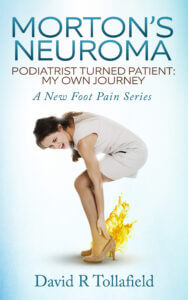An introduction to fact sheets for patients
Ask the right questions
Factsheets provide information about a treatment programme that has been recommended. Many of us are busy and thrive on a sheet that covers the basics. Of course, you can use the internet these days and google a question but often the articles have adverts or are selling a product. There are three principles to observe.
- Is your information sheet current?
- Who produced the information?
- Does it contain what happens if things don’t work out?
The information in this advisory article does not imply the person who is treating you is not the right person but the information will assist you in your need for having the right type of information. Most regulators and professional bodies now advocate the quality of patient information.
Is your information sheet current?
There is nothing worse than having a bleached photocopy conveying hard to read information. Ask for a better copy and expect a sensible response. Professionally printed copies are better but if they are produced by a sponsor then it is likely that the information is written as a generic piece of information. This simply means it is not specific to the practitioner you are consulting.
At the bottom of an information sheet, you should see when the material was first published and often a second date when the review is expected. This is helpful as it informs you if the information is in date.
Who produced the information?
Does it matter who produces information? No, not really. The most important matter is that the information is current and appropriate. Of course, each clinician may have a slightly different approach and it is helpful to embrace any personal aspects of care. Here are a few thoughts.
The reliance on websites will become the goal of website drivers. The click (on blue text) button or hyperlink can be found within most text and provides swift access to more reading material.
The National Institute for Health Care Excellence or N.I.C.E website covers evidence about treatment. Sometimes the level of writing can be heavy going for the non-medic. Although this site is a nationally-funded database and website, the information can slide out of date. The reason for this is that it takes a while to review scientific data.
NHS Choices also offers a useful information resource. And then you can use YouTube which has masses of material, much from the USA. As a guide, information older than 5 years may need to be viewed cautiously, but please do not be dismissed outright.
FootEducation.com is one of the best sites when it comes to surgery but as with many professional sites, the value of patient information varies enormously. There is a good range of organisations based around patients that offer information such as arthritis and rheumatism, epidermolysis bullosa which is very specific for skin and of course diabetes. Few organisations offer dedicated information just about feet unless as in the case of diabetes feet play a significant role in the disease and loss of limb. ConsultingFootPain tries to bridge the gaps.
Does it contain what happens if things don’t work out?
Fact sheets provide data and hard statistics that relate to information about conditions that can be treated. It is difficult to write about every single procedure affecting the foot. We do our best to provide the most accurate impression of expectations. As clinicians, we must avoid being over persuasive. The bulk of information should be provided before any treatment starts. It is important for all of us, patients and clinicians, to ensure those risks, no matter how small are included in the discussion.
Recently I have added patient journeys to my literature and hope this trend might grow from my pen and from others. Telling a story is powerful and better expressed than many clinicians can offer. There is a balance between downplaying risks and the impact of having a particular treatment. Today it is the patient who must decide which pathway to travel.
Fact sheets versus general information
I would make a distinction between fact sheets and general information. Here is my take. You want to travel from Birmingham to London. Facts about that journey include the time it takes, cost, services available en route, the speed you might travel, options first, second class. These are all fixed, known although might have variables or ranges; 95 – 120 minutes.
General information will provide you with how you might get there. This could include some options together with the dos and don’ts associated with travel. It may include how to connect to the internet once you are on the train. What about the type of food and drink available. Alternative choices might include road travel, flight as well as train. Specific information about clinical treatment might be used to distinguish the fact that one person might use a different type of treatment to another. Information is governed by the limitations of an individual’s practice experience.
Dialogue is still important
An introduction to fact sheets is important at every consultation these days. Fact sheets do not and cannot tell the whole story but they do provide a flavour. They do not represent choices alone. Fact sheets do not always tell you about alternative treatment. Can you make a decision to proceed to treatment (especially surgery)?
In accordance with current legal views, it is important to have dialogue. The patient should try to ask as many questions as possible. Reading the information and returning to a clinical office to go through those points is better than written information alone. A patient should be encouraged to return to the clinic before interventions to ensure all is understood. I have always encouraged my patients to write down their queries to avoid forgetfulness.
Of course, minor interventions do not always require much preamble. In this case, choices would be limited, the risks and impact minimal and the overall understanding would have less complexity. Examples might include injections to dull pain or simple remedial toenail management. You can read what makes a good factsheet What should you ask from a factsheet? by clicking on the highlighted line. This ensures that you walk out with the necessary information to help decision making.
Most clinical services these days will provide either a stock fact sheet printed by a professional body or printed in-house. Always ask for written information as this is now part of standard practice in all professional fields of medicine.
Professionally produced patient journey books available from Amazon books
as electronic publication / Kindle and paperback
Bunion. Hallux Valgus. Behind the scenes.

‘This warts and all approach provides some very honest frank and practical information…’ Jackie (patient) West Midlands
Morton’s neuroma. Podiatrist Turned Patient: My Own Journey.

‘Wonderful book!! So helpful and not all medical jargon that you can’t understand. Would recommend this highly to anyone who is about to undergo this kind of surgery.’ James (patient).
Thanks for reading ‘Introduction to Fact Sheets’ by David Tollafield.
Sign-up for here my regular FREE newsfeed
Published by Busypencilcase Communications. Est. 2015 for ConsultingFootPain



Trackbacks/Pingbacks